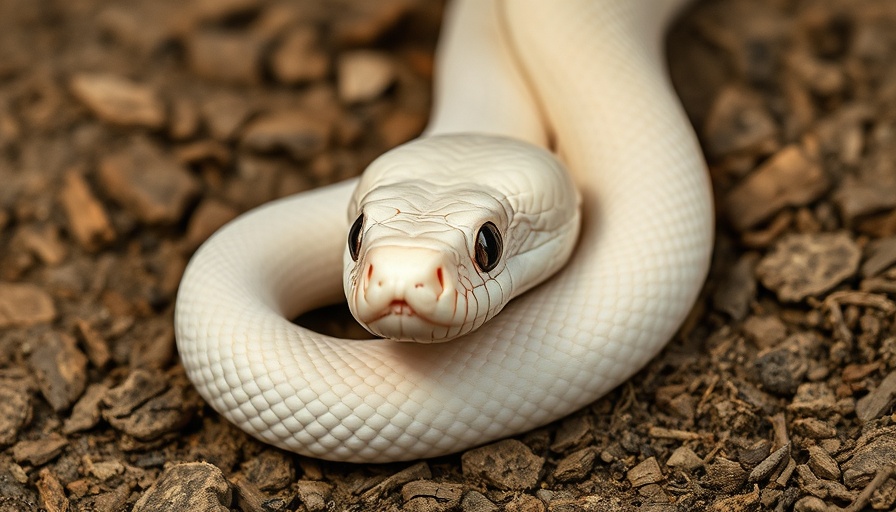
Understanding Snake Mouth Rot: A Hidden Danger
Snake mouth rot is an often-overlooked condition that can pose serious risks to our scaly companions. Known medically as infectious stomatitis, this disease affects snakes of all kinds, manifesting through painful symptoms that can escalate quickly. As responsible pet owners, being informed about this condition is paramount for ensuring our snakes lead healthy lives.
Here Are The Signs to Look For
Early detection is key in managing snake mouth rot effectively. Symptoms often start subtly, with pet parents noting behavioral changes before the more serious signs manifest. Common indicators include:
- Loss of appetite
- Excessive drooling
- Redness or swelling around the mouth
- Presence of blisters or sores
- Asymmetry of facial features
- Red spots or hemorrhaging in the mouth
If you notice these signs in your snake, it’s crucial to act quickly. Ignoring symptoms can lead to the condition worsening, potentially resulting in severe infections and even life-threatening situations.
Causes Behind Snake Mouth Rot
Mouth rot usually begins as a bacterial infection. Bacteria can enter the snake's mouth through cuts or abrasions or can proliferate in a weakened immune system, often due to poor environmental conditions. Snakes housed in high-humidity and warm environments, like pythons and boas, are particularly at risk. Other factors contributing to the disease include inadequate hygiene practices and a poor diet.
It's imperative to provide a clean and stimulating environment for your snake. Regular cleaning of their habitat, along with the provision of a nutritious diet, can significantly reduce the risks of mouth rot and other diseases.
Effective Treatments for Snake Mouth Rot
Should you suspect mouth rot, obtaining veterinary care right away is crucial. Treatment typically encompasses:
- Antibiotics to combat the infection
- Pain medications to ensure comfort
- Supportive care such as maintaining hydration and nutrition
Veterinarians may recommend additional treatments based on your snake's specific condition. Remember, treatment may vary, especially in chronic cases which could require more rigorous management strategies.
Preventing Snake Mouth Rot: Practical Steps to Take
Prevention is always better than cure. To ensure your snake remains healthy, consider the following tips:
- Ensure consistent cleanliness of their habitat.
- Maintain appropriate humidity levels.
- Offer a balanced and nutritious diet.
- Regularly check for cuts or injuries in your snake's mouth.
- Schedule routine veterinary check-ups for general health assessments.
Implementing these measures can help mitigate the risk of mouth rot and promote overall well-being in your slithery friend. Being proactive about your pet's health can save you both stress and heartache in the long run.
A Community of Caring Pet Owners
As a community, pet owners should strive to exchange knowledge and resources related to snake care. Connecting with other snake enthusiasts can provide invaluable insights and tips on ensuring the best health for your pet. Whether through forums, social media groups, or local reptile shows, these conversations can foster a greater understanding of keeping our snakes healthy.
Conclusion: Your Proactive Role in Pet Care
As caring pet parents, staying informed about snake mouth rot and other potential health concerns can greatly enhance your pet’s quality of life. With timely veterinary attention, suitable treatment, and preventive measures, most snakes can recover fully from mouth rot. Your commitment to your snake's health is a testament to the bond of trust and companionship that you share. If you're ever in doubt, don't hesitate to reach out to a veterinarian for guidance.
 Add Row
Add Row  Add
Add 


Write A Comment